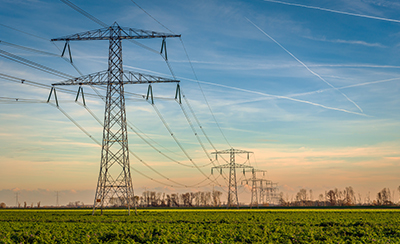< Back to blog
Thinking more proactively about the grid’s long-term needs - Our first-ever 20-Year Transmission Outlook
By Neil Millar, Vice President, Infrastructure and Operations Planning
February 3, 2022
 Every year, the California Independent System Operator conducts its annual transmission analysis, providing an update to a 10-year planning horizon focused on determining what transmission additions or upgrades are needed to keep the electrical grid running smoothly and reliably.
Every year, the California Independent System Operator conducts its annual transmission analysis, providing an update to a 10-year planning horizon focused on determining what transmission additions or upgrades are needed to keep the electrical grid running smoothly and reliably.
The process is rigorous. It involves many key stakeholders and results in a plan approved by our Board of Governors that sets in motion the design, permitting and construction of specific transmission projects. On Tuesday, Feb. 1, we released that update, identifying 24 transmission projects costing an estimated $2.9 billion.
The list represents a big jump in identified transmission upgrades, which have averaged $217 million over the past five years, because as the state moves forward with its commitment for a carbon-free grid by 2040 – and as it further electrifies its transportation, industrial and residential sectors – we will experience significant growth in demand for power, along with an influx of new resources to meet demand.
In 2021 alone, we added 85 new clean energy projects to the grid, the most ever in a single year. By this June, we are anticipating an additional 2,100 megawatts (MW) of storage, 1,200 MW of solar, 200 MW of wind, 40 MW of hydropower, 30 MW of natural gas and 11 MW of biofuel. The total capacity is 3,581 MW, of which about 2,181 MW will be available at net peak when demand remains high and stored energy is dispatched as the sun sets and solar diminishes.
With similar additions of power expected in the years ahead, there was a growing recognition it was time to take an even more intensive and long-term focus on the transmission system that will be necessary to deliver all that energy to the homes, schools, businesses, hospitals, public attractions and other customers who depend on it.
That’s why this year, on a parallel track, we have done something very different: we released the ISO’s first-ever draft 20-Year Transmission Outlook, also on Feb. 1. This blueprint does not develop recommendations for specific project approvals like the 10-year update. But it provides a more comprehensive, longer-term analysis of future resources coming onto the grid, establishing a baseline of what the system will need and look like in 2040.
To complete this new complex planning exercise, we had extraordinary cooperation and coordination from our peers at the California Public Utilities Commission (CPUC) and the California Energy Commission (CEC). Both entities have been deeply involved in this process since even before its launch last May.
The result is a more comprehensive Outlook based on the state’s sound planning assumptions that nearly 120 gigawatts (GW) of clean power must be added to the grid by 2040 to meet California’s rising demand for electricity and keep one of the world’s most robust economies running on all cylinders. This is in addition to the behind-the-meter rooftop solar already taken into account in the CEC’s load forecast, expected to reach 30,336 MW in the CAISO’s footprint by 2040.
The amount of electricity projected to be needed two decades from now is almost three times what the grid has today and will include renewable energy from utility scale solar, storage, geothermal, offshore wind plants and sustainable resources from out-of-state and perhaps technologies that are not yet fully developed. Large transmission projects often take up to a decade to complete, so we must pick up the pace with which we identify those longer-term needs to get projects up and delivering all the new power we know is coming.
Our draft Outlook estimates that the cost for additional high-voltage transmission capacity will be about $30 billion. This is a sizable investment, of course, but one that will be spread over 20 years and will support the development of over 120 GW of new generating resources. And although final numbers and cost allocation details will be refined over time, this level of investment will provide the foundation for California’s $3 trillion annual economy, strengthen connections with our market partners across the West, and deliver enough safe, reliable and clean energy to meet demand and future growth.
The Outlook will be refined as new information and technology develop. It can also change as we continue coordinating with state, regional and federal regulators and policy makers, stakeholders, industry and others to make this essential infrastructure buildout as cost-effective as possible.
We believe it was essential to work on these two planning reports in parallel because identifying long-term infrastructure needs is not only vital to our future, it can also produce more-informed decisions today by virtue of having a clearer vision of where we are headed.
Drafts for the 2021-2022 transmission planning process and the 20-year Transmission Outlook are posted on the ISO’s website. A stakeholder call on both documents is scheduled for Monday, Feb. 7. In the weeks and months ahead, we will continue working diligently and collaboratively with a diverse range of partners and stakeholders in a transparent process to ensure that transmission upgrades are undertaken with both reliability and cost-effectiveness paramount.
< Back to blog